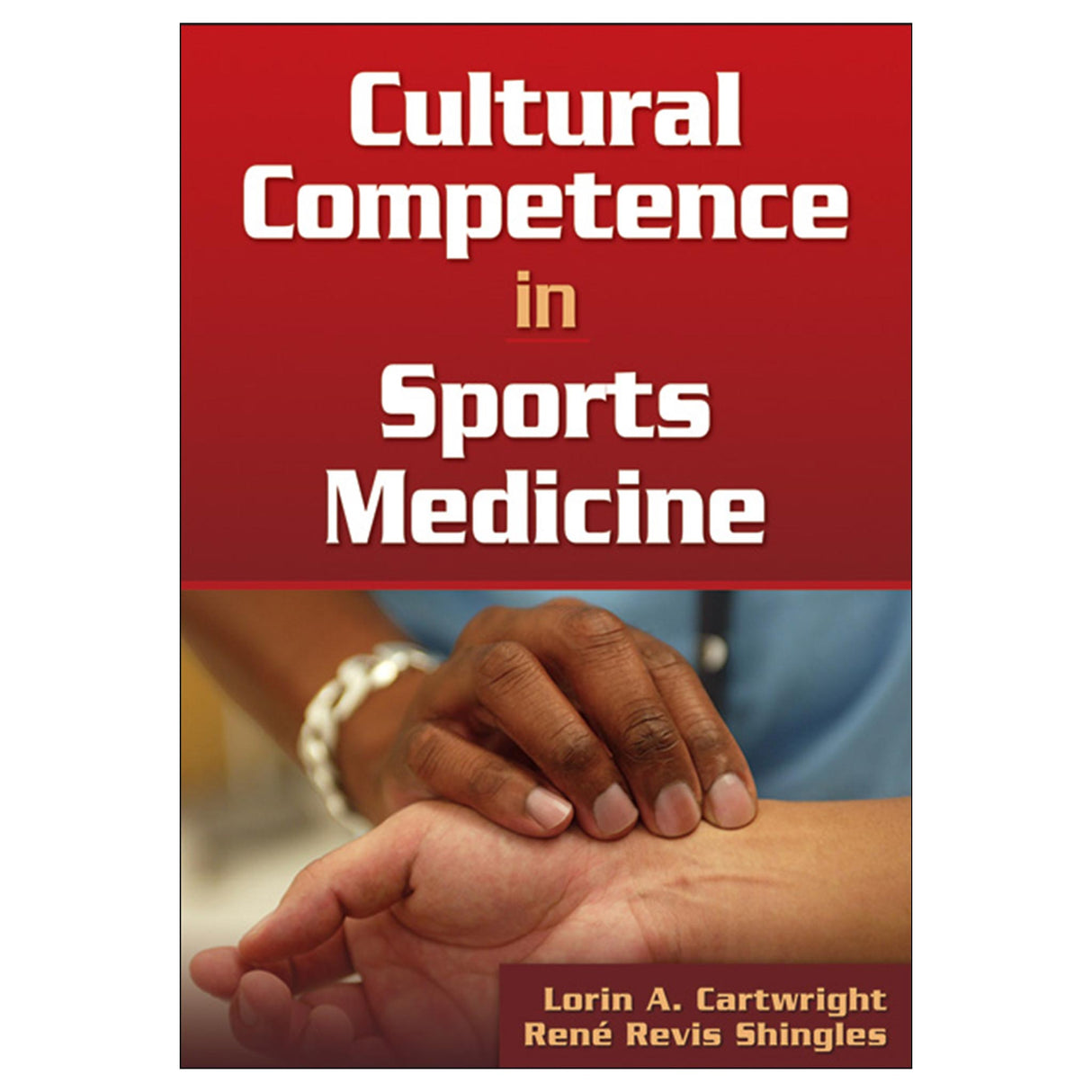Cultural Competence in Sports Medicine PDF
$70.95 CAD
Access Duration: 10 Years
Cultural Competence in Sports Medicine is a must-have resource for any health care professional who works with athletes and patients of diverse cultural backgrounds. This unique text stresses the importance of recognizing different cultural attitudes, beliefs, and expectations so that athletic trainers and other health care professionals can modify their professional behavior accordingly to reflect their sensitivity to their patients’ needs, ultimately resulting in a comfortable and positive health care experience for patients.
The need to provide behaviorally competent health care to diverse populations prompted the National Athletic Trainers’ Association to identify cultural awareness as a key competency for all certified athletic trainers, including entry-level athletic trainers. Cultural Competence in Sports Medicine supports this objective by defining the concept, explaining why it is important, and using examples specific to athletic trainers and other health professionals working with athletes. The text covers the various cultural competence theories and models, including the process of cultural competence in the delivery of health care services, which serves as a foundational model for the remainder of the text. Because readers will need to understand their own biases before they can begin to change them, the text offers information on analyzing and assessing one’s own cultural attitudes and behaviors. Once readers are prepared with that cultural awareness, the text builds cultural knowledge about various racial and ethnic groups, including the origin of culture, common sensitivities and conditions, possible beliefs about illness and preventive healing practices, and providing symptom management and treatments.
Cultural Competence in Sports Medicine also presents strategies for engaging in cross-cultural interactions. Readers will learn these factors:
• Cultural considerations for each stage in the physical assessment process, including taking an oral history, inspecting, observing, and palpating
• How to work through an interpreter to foster clear communication with athletes
• The conventional dress code generally expected by different cultures to cultivate a professional atmosphere
• Appropriate palpation techniques across cultures so athletes are comfortable with the type and degree of physical contact
• The differences in acceptable interaction between male and female clients
Activities throughout the text provide opportunities for students to apply their developing cultural awareness and related skills. Role-playing exercises help readers realize and understand their own cultural viewpoints, while thought-provoking “What Would You Do?” sections detail a cultural encounter and encourage the reader to reflect on the situation either individually or through in-class discussion. Each chapter also includes chapter objectives, interviews with professionals, review questions, and key terms to help students comprehend and retain the information presented. Instructors will find an online instructor guide and test package to help them plan and deliver their courses.
Cultural Competence in Sports Medicine explores methods of assessing the overall cultural competence of a health care organization. Whether part of an institutional mission or a personal objective to become more behaviorally competent when working with athletes or patients of diverse cultures, this text will serve as a guide. Readers will begin to understand their own cultural viewpoints and those of others while learning the tools to apply their new cultural awareness in offering more culturally sensitive and supportive health care to their athletes and patients.
Part I. Exploring Cultural Competence
Chapter 1. Defining Cultural Competence
What Is Cultural Competence?
Why Is Cultural Competence Important?
Theories and Models of Cultural Competence
Process of Cultural Competence
Terminology and Language
Summary
Learning Aids
Chapter 2. Cultural Beliefs and Practices
Culture-Bound Syndromes
Complementary and Alternative Medicine (CAM)
Summary
Learning Aids
Chapter 3. Demographics and Health Disparities
Changing Demographics
Relationship Between Demographics and Health Disparities
Reducing Health Disparities
Summary
Learning Aids
Part II. Cultural Awareness
Chapter 4. Understanding Difference
Unpacking the Luggage
Repacking the Luggage: Intersection of Race, Class, Gender, Sexuality, and Religion
Summary
Learning Aids
Chapter 5. Understanding Self
Cultural Awareness and Self-Assessment
Everyone Has Culture
Generalizations, Stereotypes, and Prejudices
Advantages, Disadvantages, and Privileges
Summary
Learning Aids
Part III. Cultural Knowledge
Chapter 6. Native American
American Indian
Native Alaskan
Summary
Learning Aids
Chapter 7. Asian American and Pacific Islander American
Chinese
Filipino
Vietnamese
Summary
Learning Aids
Chapter 8. Black
African American
Sub-Saharan African
Haitian
Summary
Learning Aids
Chapter 9. Latino
Mexican
Puerto Rican
Cuban
Summary
Learning Aids
Chapter 10. White European
German
Irish
English
Summary
Learning Aids
Chapter 11. Middle Eastern
Arab-Collective (Lebanese, Syrian, Egyptian)
Iranian
Summary
Learning Aids
Part IV. Cultural Skill and Cultural Encounters
Chapter 12. Eliciting Information
A Revised Cultural Formulation and the Explanatory Models Approach
Other Models for Eliciting Information
Eliciting Information Through Use of an Interpreter
Summary
Learning Aids
Chapter 13. Culturally Based Physical Assessment
Taking an Oral History
Inspecting and Observing Physical Signs
Palpating
Summary
Learning Aids
Chapter 14. Working in a Culturally Competent Health Care Organization
Cultural Desire in the Health Care Organization
Cultural Awareness in the Health Care Organization
Cultural Knowledge in the Health Care Organization
Cultural Skill in the Health Care Organization
Cultural Encounters in the Health Care Organization
Summary
Learning Aids
[This] is a pioneering textbook in sports medicine that should spur much-needed conversation and advance learning.
—Doody’s Book Review
Cultural considerations when working with Mexicans
Identify physical signs of injury or illness in cross-cultural patients
Institutional cultural self-audit and SWOT analysis
What is cultural competence?
Instructor guide. Includes chapter outlines, key topics with presentation tips, evaluation suggestions for the learning aids, and class activity suggestions.
Test package. Includes more than 170 multiple-choice questions. The test package is available as a rich text file, through Respondus software that allows instructors to create their own tests by selecting from the question pool, or for use through a learning management system such as Blackboard or Moodle.





